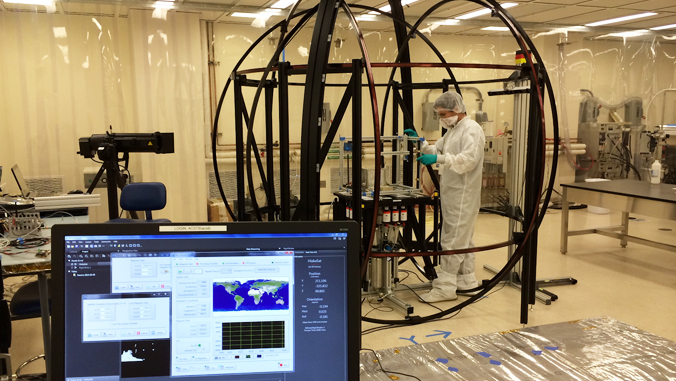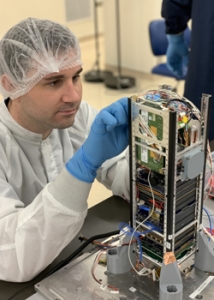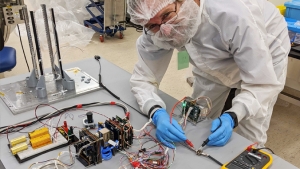
As the University of Hawaiʻi at Mānoa transitions to all online classes, some research at the Hawaiʻi Institute of Geophysics and Planetology (HIGP) has continued via online conferencing, and going into the lab only for essential work in a safe space known as the “clean room”. Researchers developing two satellites continue their work with the hope of sticking to Neutron-1’s original satellite launch schedule of September 2020.


The Hawaiʻi Space Flight Laboratory (HSFL) is building and testing two satellites known as Neutron-1, a neutron detection mission, and Hyperspectral Thermal Imager, a UH satellite chosen for a NASA space mission. These tests are conducted in a state-of-the-art clean room for small satellites. The clean room is the facility where the final phase of integration and testing of the flight hardware can be conducted, due to the climate-controlled clean environment.
Researchers can enter the clean room wearing clean room suits, hairnets, boots, gloves and beard masks, to conduct essential work.
“We are dedicated to protecting each other from this virus, but we are also dedicated to protecting our organization, and our society as a whole, by maintaining our productivity,” said HSFL Lead Software Engineer Eric Pilger.
- Related UH News story: UH satellite chosen for NASA space mission, May 14, 2019
The clean room includes a dynamic testbed for small satellites in a cage that generates a magnetic field as well as a large thermal vacuum chamber that mimics the environments that the spacecraft will experience.
“The thermal vacuum chamber helps us control the temperature environment around the satellite in a vacuum to simulate the space environment,” said HIGP Assistant Researcher Frances Zhu. “The dynamic platform tricks the satellite into seeing the sun, the stars, and magnetic field as if it were in some kind of orbit around Earth. Researchers can also test hardware that makes the satellite move, like thrusters (puffs of gas), torque coils (magnetic field manipulation) and reaction wheels (angular momentum change).”
The HSFL team consists of Luke Flynn, Miguel Nunes, Zhu, Trevor Sorensen, Amber Imai-Hong, Isaac Rodrigues, Pilger, Lloyd French, Lance Yoneshige, Yosef Ben Gershom, Kasey Hagi, Craig Opie, Spencer Young, Kenny Son, Cameron Asaoka and has included dozens of undergraduate students over the years.
—By Sarah Hendrix

